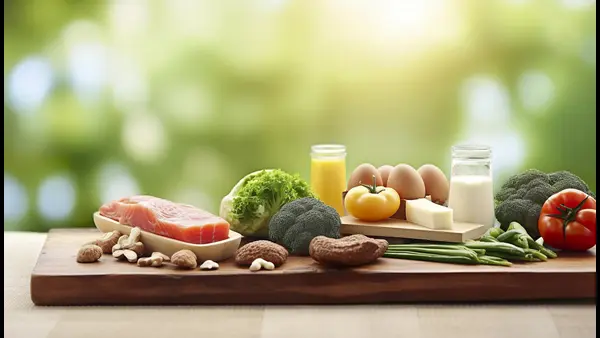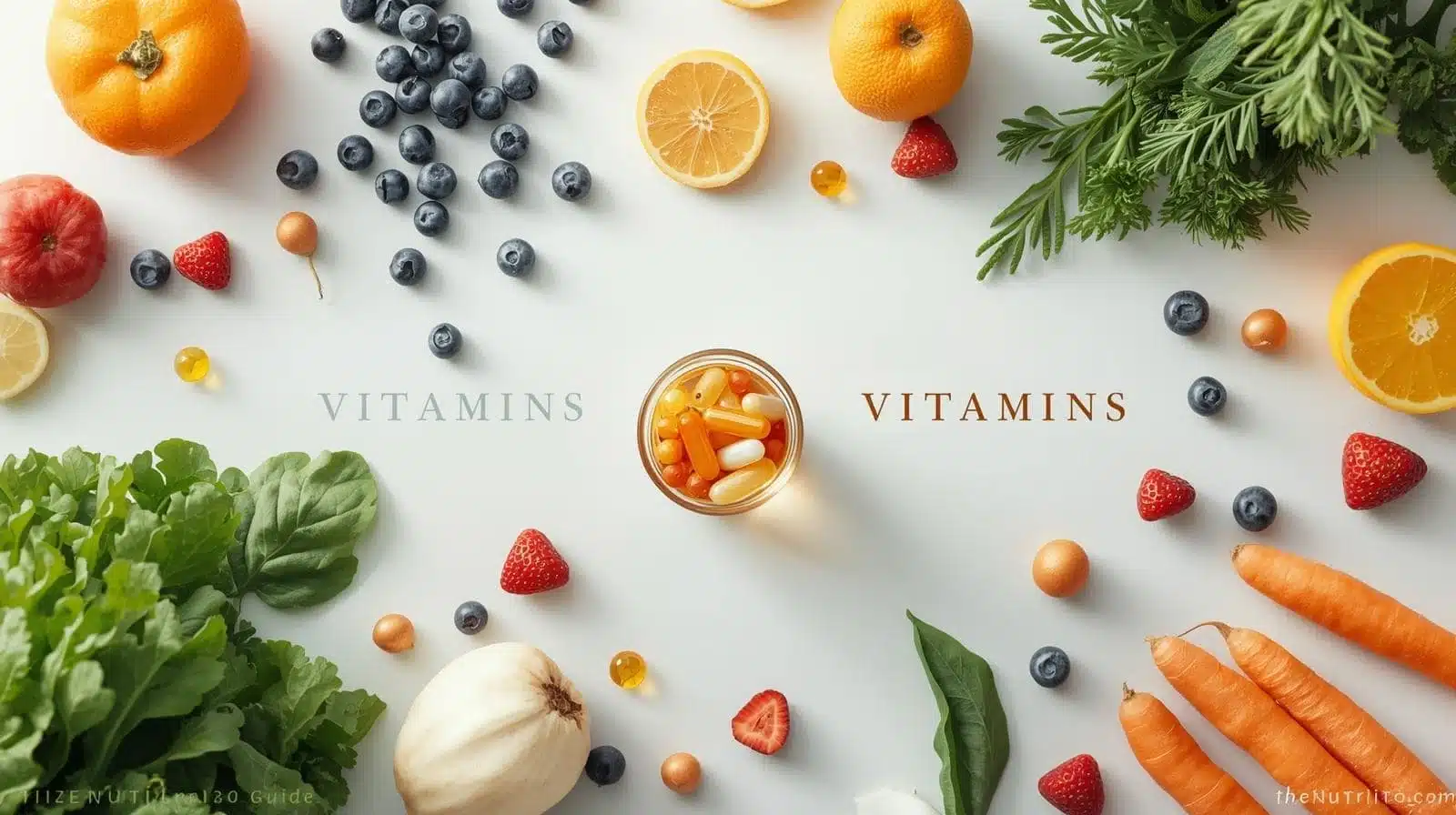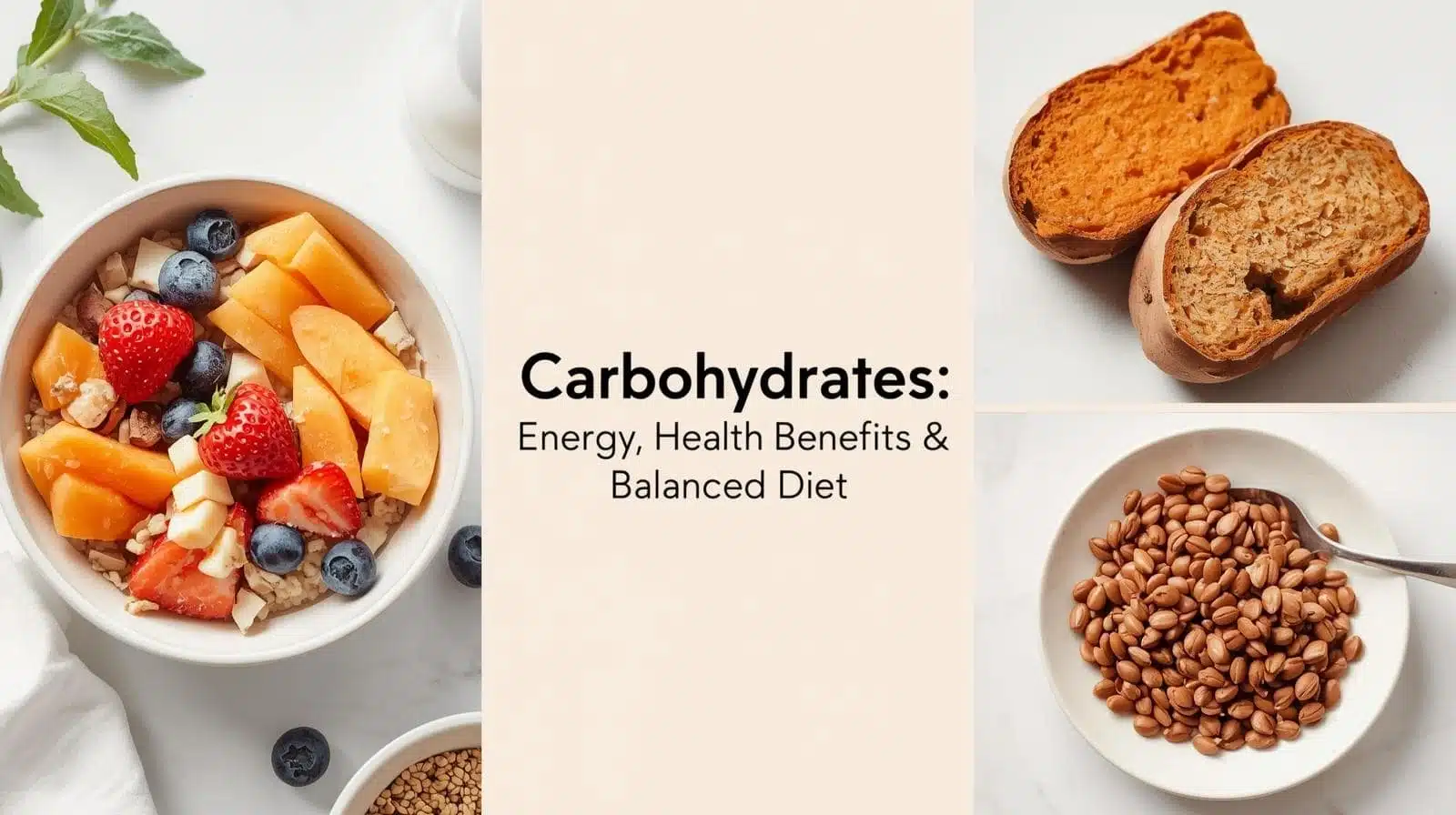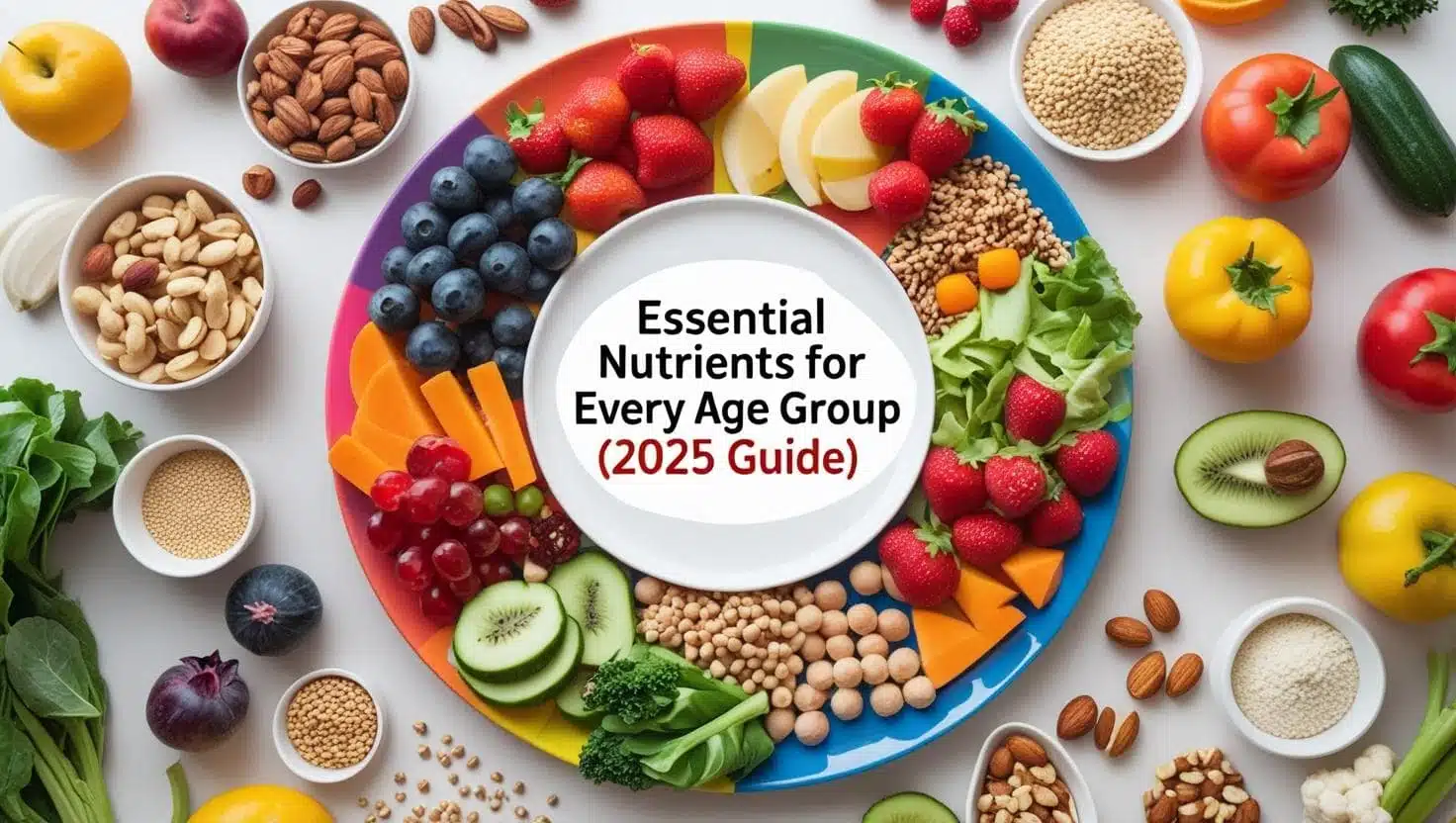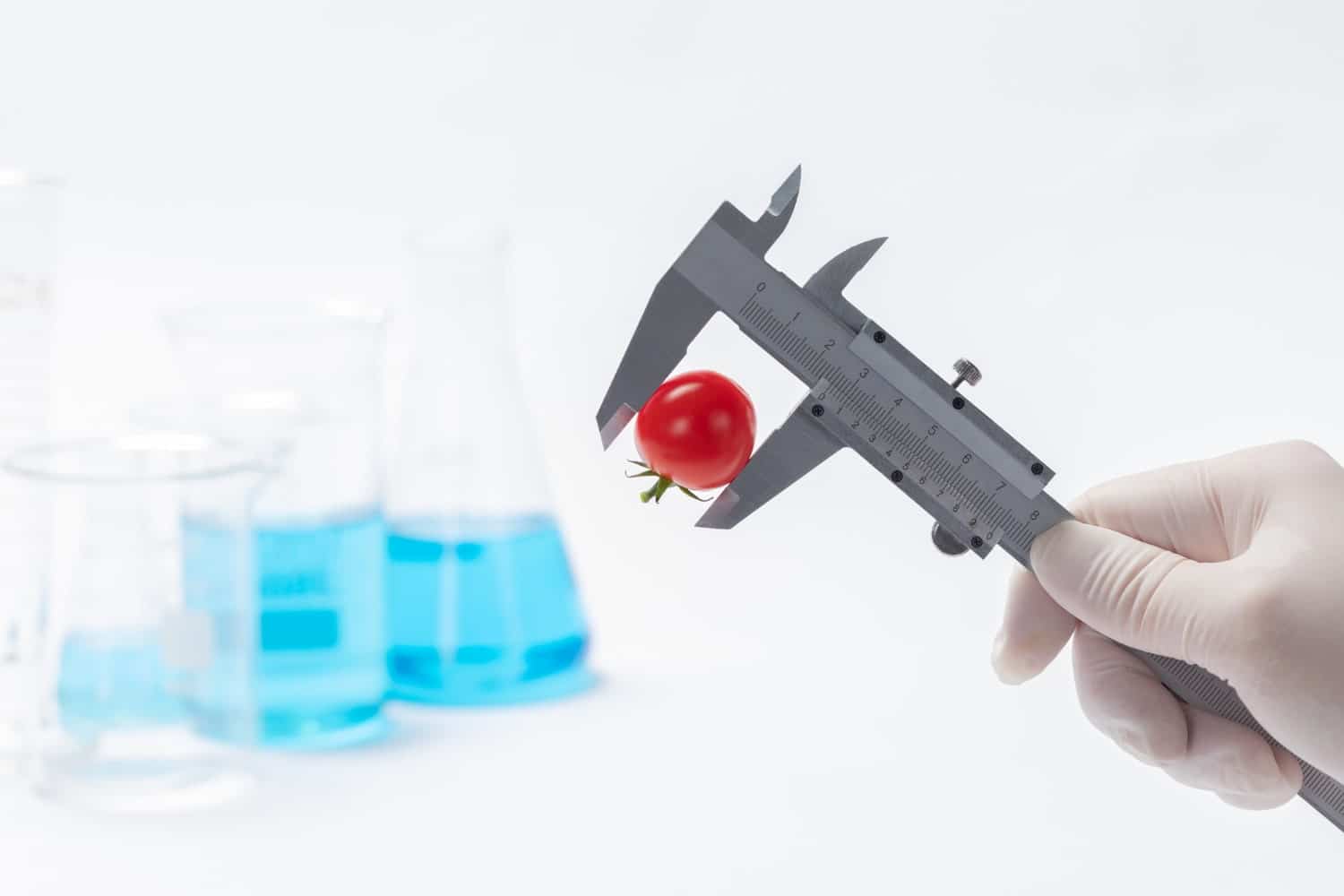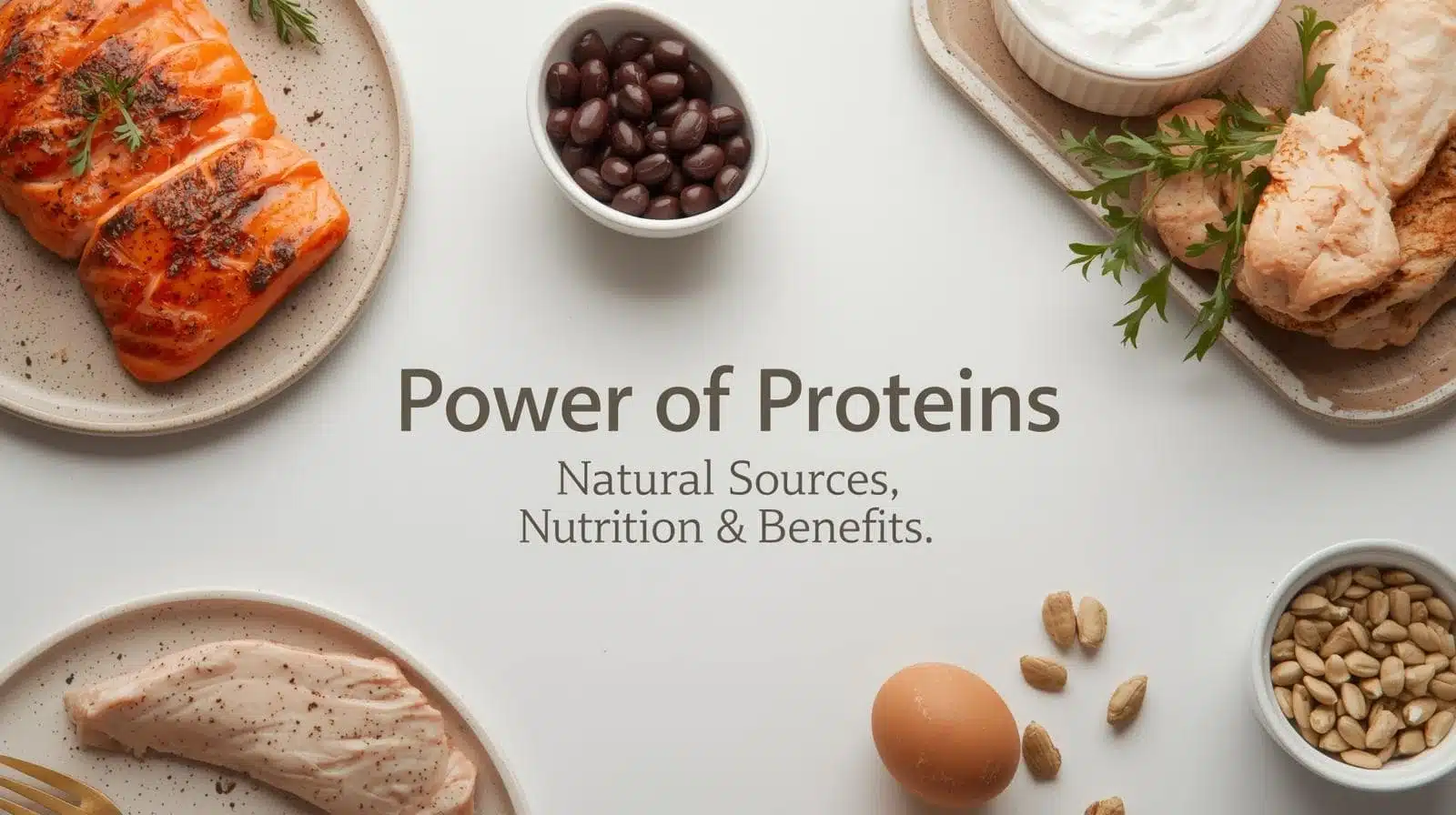
Introduction
Proteins are life building blocks: they make your body firm and your cells sound. All these large molecules use you to build up your muscles, bones, skin and blood. It also assist in numerous body activities such as growth and healing and even fight off the infections. Enzymes and hormones in your body are proteins, which transmit signals. To use simple language, we need protein to make new cells, repair harm and maintain our well being.
Everybody, including the young kids and the old people needs protein. We are going to discuss the quantity of protein you require, the source of protein or natural foods, and the importance of this.
Read Also: Carbohydrates: Energy, Health Benefits & Balanced Diet
How Many Grams Of Proteins Do We Need Daily?
Protein needs are based on your age and size and activity level. Experts recommend that protein give between 10 and 35 percent of your cal. per day. A basic rule is that protein should equal 0.8 g of you body mass divided by every kilogram. Or approximately 0.36 g per pound, a typical adult. In case of a person, you are 165 pounds (75 kg). Then you have to take protein of approximately 60 grams per day.
This works out in practice to most women needing about 46 grams of protein per day and most men 56 grams per day. Such numbers are based on U.S. nutrition sources and research. Very active or sporting people might require additional protein. Past 40 or 50 years, protein requirement tends to increase to approximately 1.0-1.2 grams divided by kilogram of body weight to maintain muscle and strength. Majority of the Americans already consume sufficient protein. Men get 16 percent average protein calories and women get 15.7 percent average protein calories.
Children and Teens: Due to the growing bodies, bodies require more protein per pound of body weight. As an illustration, children aged between 1 and 3 years require an average of 13 grams of protein in one day. A 4-8 years old child requires approximately 19 grams a day. And 34 to 52 grams per day in teenagers based on age and sex. Normal diet provides school-age children with adequate protein . And most children consume two or three times the recommended amount of protein.
Protein Tip: Still, rather than taking the supplements, you can find your protein in real food. Rather than using protein powder as a protein source, the Mayo Clinic suggests choosing lean meat, fish, eggs, low-fat milk and cheese, beans, lentils, nuts and seeds. Include protein in your meals – aim for 15 to 30 grams at each meal during the day so you can feel full and provide your body with the energy it needs.
Read Also: Essential Nutrients for Every Age Group (2025 Guide)
Plant And Animal Sources Of Protein
There are a lot of natural foods that contain protein. The Dietary Guidelines state that a healthy diet should include lots of animal- and plant-based protein-rich foods. Here are some of the highlights of whole foods that are a good choice:
- Lean meats and poultry such as chicken breast meat, turkey and lean cuts of beef, pork or lamb. Go for low-fat cuts so you don’t get too much saturated fat. These foods have about 7-8 grams of protein per cooked ounce and they are also a good source of minerals like iron and zinc.
- Fish & seafood: Salmon, tuna, cod, shrimp and other fish are all high in protein and healthy for the heart due to omega-3 fats. Three ounces of salmon or tuna has 17 to 20 grams of protein. Preferably, buy lower mercury fish like trout or sardines, or salmon.
- Eggs: Wholesome eggs are complete protein meaning that they have all the amino acids in them that your body needs. A large egg can have approximately 6 grams of protein. The egg whites are nearly pure protein and are very versatile.
- Dairy: Milk, yogurt and cheese are food sources of protein. There is 8 grams of milk protein in a cup of milk. Greek yogurt and cottage cheese are very high in protein, with around 15 to 20 grams per cup. They also provide calcium and other nourishments. If you are looking for ways to reduce saturated fat, use low- or skim-fat.
- Legumes and Beans: Foods high in plant protein include black beans, kidney beans, pinto beans, chickpeas, lentils and peas. One half cup cooked lentils or beans contains 7 to 9 grams of protein. They also provide fiber, vitamins and minerals, so they play a big role in your health.
- Soy Products: Soybeans, Tofu and Tempeh are high in protein. For example, a half cup of tofu has nearly 10g of protein. Soy is one of only a few plant proteins that is a complete protein – containing all the essential amino acids.
- Nuts and seeds such as almonds, walnuts, chia seeds, pumpkin seeds and peanut butter are about 4 to 8 grams of protein per ounce and also contain healthy fats. People eat them as a snack or topping, they’re palatable, but high in calories, so keep the portion small.
Try to combine different foods. For instance, beans, grilled chicken, nuts and a small amount of cheese are an excellent source of protein in a salad. A wide range of foods will ensure that you do get all nine of the essential amino acids that your body requires.
The animal products (meat, eggs, dairy, fish) naturally contain all the essential amino acids (complete proteins), so do soy and quinoa. Individually, most plant foods do not contain any one or more. But a mix of plant proteins (such as rice and beans, or nut butter on whole wheat toast) can easily satisfy your requirements.
Which Role Does Protein Play In Your Body?
Protein is not only important to bodybuilders, but to all of us. Some of the main advantages and functions of consuming sufficient protein are as follows:
- Builds and heals tissue: The protein plays a very vital role in the well being of muscles and bones. When you work out or engage in any other activity that requires physical efforts. A protein assists in repairing small torn muscles and creating new fibers making you strong in the long run. It also maintains your skin, nails and hair.
- Increases growth: Children and teens especially need protein to grow. It aids the development of new cells, cartilage and bone in growth spurts.
- Enzymes and hormones: There are too many proteins in your body which are enzymes – little machines – which break up food nutrients. For example, fats, carbs and proteins are broken into usable energy by digestive enzymes (which are proteins themselves). Other hormones (insulin and growth hormone) are found in the proteins. Which transmit chemical signals to control sugar levels in the blood, growth and appetite.
- The fluid and pH level: Proteins in the blood (such as albumin) aid in maintaining fluid within your blood vessels. This prevents swelling of tissues and prevents loss of blood. Proteins are also known to help balance your body PH.
- Satiety and weight management: Protein has the ability to fill you up and satisfy more than either carbs or fats. Eating a protein at every meal will reduce hunger and maintain appetite. This may prove beneficial when you are attempting to either gain or lose weight as you are not likely to overeat.
- Energy source: Your body can burn up protein as a last resort (4 calories per gram, just like carbs). The body normally uses carbs and fats as their main energy sources. But when carbohydrates and fats are depleted, the amino acids can undergo conversion to glucose to continue powering you on.
On the other hand, protein deficiency (eating too little) is rare in the U.S. since most diets are adequate. However in extreme cases or very restrictive diets. Low protein may cause weakness of the muscle, otherwise affects the growth rate of children.
On the other hand, eating excess protein beyond what your body requires does not help you to gain extra muscle without exercising. The excess is just stored up as fat or used as energy. Also worth mentioning is that very large amounts of it (more than about 2 g/kg) may overload the kidneys in the long term. Particularly in the presence of an underlying kidney problem.
Generally, there are no downsides to consuming healthy protein foods (instead of processed meat products or high-fat cuts), as they offer benefits.
Conclusion
Proteins are indeed good nutrients – you may consider them as fuel to your bodily engine. Consuming a rainbow of natural meat and fish, eggs, beans, nuts, milk and dairy, etc. You provide your body with all it may need to grow, to heal, and to work at its best. The idea is to have a protein source at every meal, and it is important to remember that not only animal. But also plant, foods are considered to be a source of protein. Eating grilled fish (not fried), plain Greek yogurt (not a sweet dessert), and bean salad (not chips) are among the healthy options in 2025 and beyond. By doing so you will gain strength, boost metabolism and be satiated. And also receive the vitamins, fiber, and healthy fats that nature combined with those proteins.
Frequently Asked Questions (FAQs)
There are two types of proteins, complete and incomplete proteins. Complete proteins are those which contain all essential 9 amino acids. On the other hand, incomplete are those which lack one or more essential amino acids.
Mild protein deficiency is extremely rare in the U.S. But when it affects individuals (on very limited diets or in illnesses). They lose muscle, get tired very easily, and the injured tissues take a long time to recover. In children it can slow development. You cannot get less protein, unless you are feeding on an unbalanced ration.
Proteins are made up of 20 amino acids. 9 of 20 amino acids are essential and should be obtain from foods. The remaining 11 amino acids are non-essential, though in a few cases some are conditionally essential.
Disclaimer: The information on thenutrio.com is only for educational and informational purposes and is not meant to be medical, nutritional, or professional health advice. Before making any changes to your diet, treatment plan, or health routine, you should always talk to a qualified healthcare provider, doctor, or registered dietitian. You use any information on this site at your own risk, and thenutrio.com and its authors are not responsible for any bad results.


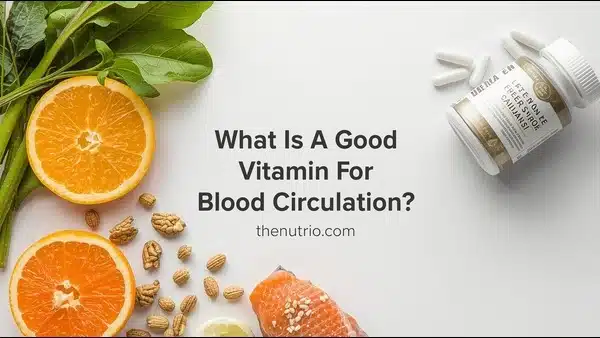
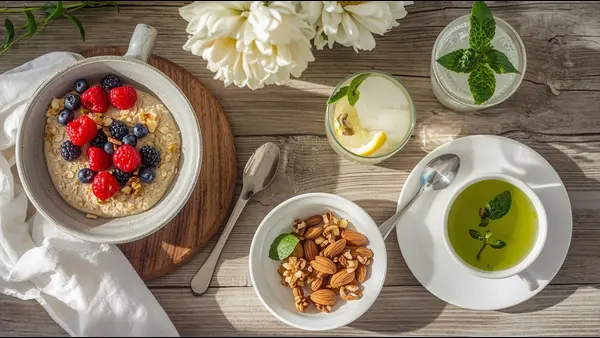
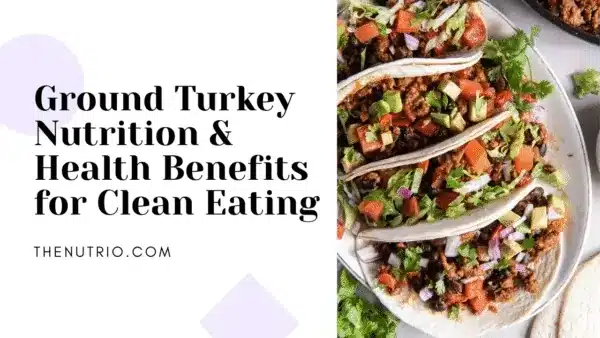
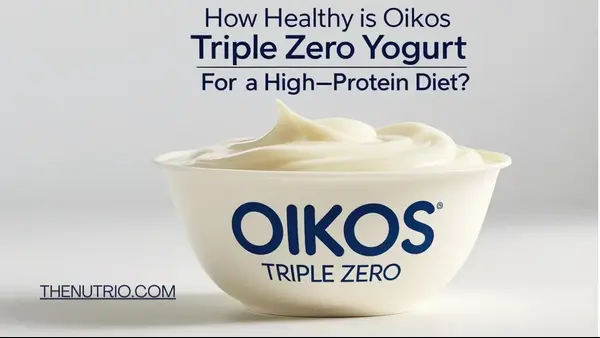
![[2025] Fats (Lipids): Best Choices for Every Age](https://www.thenutrio.com/wp-content/uploads/2025/09/A-vibrant-hero-image-showing-a-colorful-plate-rich-in-healthy-fats—like-avocado-toast-nuts-olive-oil—paired-with-text-overlay-2025-Fats-Lipids_-Best-Choices-for-Every-Age.-4-min-1-1.webp)
